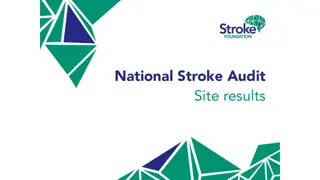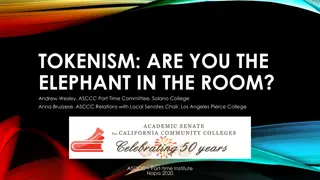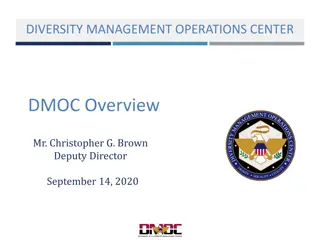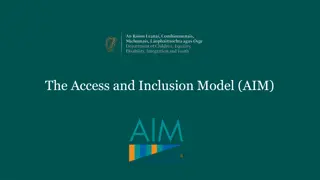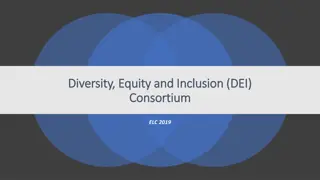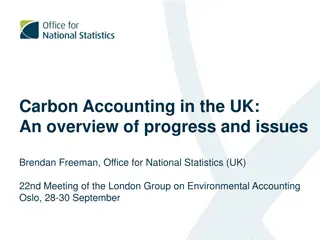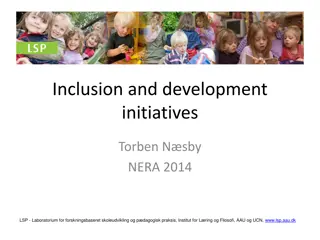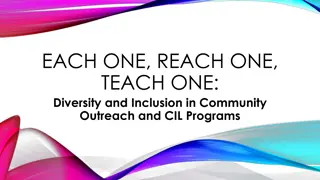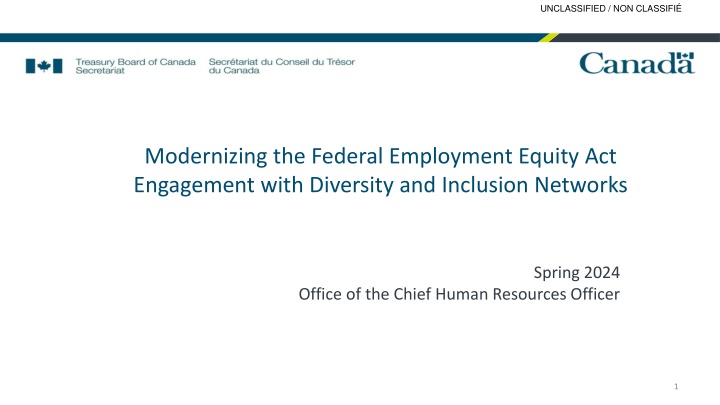
Modernizing Federal Employment Equity for Inclusion Networks
The Office of the Chief Human Resources Officer is engaging with diversity and inclusion networks to modernize the Federal Employment Equity Act, following an extensive review and release of transformative recommendations. Consultations focus on updating designated groups, supporting employees, strengthening accountability, and improving public reporting.
Download Presentation

Please find below an Image/Link to download the presentation.
The content on the website is provided AS IS for your information and personal use only. It may not be sold, licensed, or shared on other websites without obtaining consent from the author. If you encounter any issues during the download, it is possible that the publisher has removed the file from their server.
You are allowed to download the files provided on this website for personal or commercial use, subject to the condition that they are used lawfully. All files are the property of their respective owners.
The content on the website is provided AS IS for your information and personal use only. It may not be sold, licensed, or shared on other websites without obtaining consent from the author.
E N D
Presentation Transcript
UNCLASSIFIED / NON CLASSIFI Modernizing the Federal Employment Equity Act Engagement with Diversity and Inclusion Networks Spring 2024 Office of the Chief Human Resources Officer 1
UNCLASSIFIED / NON CLASSIFI Context The Employment Equity Act Review Task Force carried out the most extensive review of the Employment Equity Act(EE Act) since its introduction in 1986. The arm s length Task Force engaged with hundreds of partners and stakeholders, including community organizations, public, private, and non-profit sectors, as well as advocacy groups and networks. On December 11, 2023, the Minister of Labour and Seniors, accompanied by the former Chair of the Task Force, announced the release of the Task Force s final report: A Transformative Framework to Achieve and Sustain Employment Equity, including the report s executive summary. The report provides wide-ranging recommendations on how to modernize and strengthen employment equity in the federal jurisdiction. The Task Force was a first step to inform the modernization of the EE Act. The Government of Canada is now engaging with impacted communities, unions, organizations, and employers to understand how best to effectively implement possible changes to the Act. 2
UNCLASSIFIED / NON CLASSIFI Purpose The Office of the Chief Human Resources Officer (OCHRO) will be supporting the Labour Program with these consultations by meeting with Public Servants within the Core Public Administration, in particular with equity- seeking networks. Once engagement sessions are completed, OCHRO will be preparing a What We Heard report to summarize the feedback received through engagement sessions with equity-seeking networks, which will be submitted to the Labour Program. There are four areas for consultation: 1. Updating the purpose, designated groups and collection of survey data; 2. Supporting employees and employers; 3. Strengthening accountability, compliance, and enforcement; and 4. Improving public reporting. We encourage you to respond to any questions that are of interest and/or relevance. Departments and organizations, groups or individuals are also welcome to submit written submissions to the Labour Program by July 31, 2024 by email to EDSC.LEE-EEA.ESDC@labour-travail.gc.ca. 3
UNCLASSIFIED / NON CLASSIFI Theme One Expanded Designated Groups and Terminology 4
UNCLASSIFIED / NON CLASSIFI Definitions and Terminology The EE Act currently identifies four designated groups: Aboriginal peoples meanspersons who are Indians, Inuit or M tis Members of visible minorities means persons, other than Aboriginal peoples, who are non-Caucasian in race or non-white in colour Persons with disabilities means persons who have a long-term or recurring physical, mental, sensory, psychiatric or learning impairment and who consider themselves to be disadvantaged in employment by reason of that impairment, or believe that an employer or a potential employer is likely to consider them to be disadvantaged in employment by reason of that impairment; and includes persons whose functional limitations owing to their impairment have been accommodated in their current job or workplace Women (not currently defined in the Act) 5
UNCLASSIFIED / NON CLASSIFI Task Force Recommendations: Definitions and Terminology The Task Force found that many believe the language referring to designated groups is outdated, and existing groups are not representative of diverse communities in the labour market who face significant barriers The Task Force recommends: Creating two new designated groups for Black workers and 2SLGBTQI+ workers Replacing the term Aboriginal peoples with Indigenous workers to use a distinctions-based approach (First Nations, Inuit, M tis) Keeping women as an employment equity group Replacing the term members of visible minorities with racialized workers Using the definition of disability from the Accessible Canada Act In response, the Government announced its initial commitments to implement the above recommendations 6
UNCLASSIFIED / NON CLASSIFI The Act vs Regulations Keep the definitions in the EE Act Move the definitions to the Employment Equity Regulations Perceived stability as changes would need to be approved by Parliament More flexibility for making future updates and keeping pace with the evolution of language 7
UNCLASSIFIED / NON CLASSIFI Topics and Questions for Consultation: Definitions and Terminology Keeping in mind the government s initial commitments: 1. Are there other groups that should be further studied and considered for inclusion as designated groups under the Act? If so, what groups and why? 2. Would you keep the definitions of the designated groups in the Act, where they currently are or move them to the Regulations? Why? 8
UNCLASSIFIED / NON CLASSIFI Collection of Survey Data The workforce survey questionnaire only collects data on Aboriginal people, persons with disabilities and members of visible minorities. The Act currently requires employers, for the purpose of implementing employment equity, to collect and analyze workforce information (including information collected via the workforce survey questionnaire, also known as the self-identification survey) to determine the degree of underrepresentation for designated groups. Women are not included in current self-identification practices, which means that employers may instead use other sources, such as administrative data (e.g. through a pay system), to identify women to meet data collection and workforce analysis requirements According to the Act and the Regulations, information collected, including self-identification information, is confidential and is only to be used for the purpose of implementing the employer s obligations under the Act. Language on consent is not explicit in the Act 9
UNCLASSIFIED / NON CLASSIFI Task Force Recommendations: Collection of Survey Data The Task Force report outlines challenges for data collection and transparency and the importance of collecting distinctions-based, intersectional, and disaggregated data to better address barriers, while upholding privacy protections. The Task Force recommends: Requiring employers to ask all employees to complete the self- identification survey on initial hiring, on an annual basis, and when leaving an employer Mandating the completion of the self-identification survey but maintaining the disclosure of self-identification information voluntary (e.g., the employee would be given the option of answering prefer not to state for each question); Making self-identification surveys available in accessible formats, including all employment equity groups and disaggregated sub- groups, and clarifying that a worker may self-identify as being a member of as many equity groups and disaggregated sub-groups that apply 10
UNCLASSIFIED / NON CLASSIFI Topics and Questions for Consultation: Consent and Data Collection 1. a) Would you have concerns with amending the Act to require employers to obtain employee consent to collect and use information gathered through self-identification surveys? If so, how could we address them? This approach is in alignment with broader Task Force report arguments to strengthen trust among employees while continuing to ensure privacy protection is maintained. b) How would you address challenges associated with employee self-identification? Are there other legislative amendments and/or employer initiatives that could be implemented to improve employee trust and increase self-identification survey response rates? OCHRO comment: With the centralization of self-ID data collection under OCHRO, departments will have an important role in communicating the mandatory and voluntary aspects of the self-ID questionnaire and helping to build trust in the process. 11
UNCLASSIFIED / NON CLASSIFI Theme Two Supporting Employees and Employers 12
UNCLASSIFIED / NON CLASSIFI Meaningful Consultations Under the EE Act, employers must consult with employees representatives and bargaining agents to: Seek their views on the assistance representatives can provide to facilitate the implementation of employment equity in the workplace and communication to employees on matters related to employment equity Determine ways to minimize adverse impacts of seniority rights with respect to a layoff or recall on employment opportunities of persons in designated groups Seek their views on the preparation, implementation and revision of the employment equity plan Currently, employers must communicate information to employees regarding the purpose, measures, and progress made in implementing employment equity, but they do not have to consult with members of designated groups 13
UNCLASSIFIED / NON CLASSIFI Task Force Recommendations: Meaningful Consultations The Task Force stresses the importance of two-way dialogue between employers and employees, and ongoing collaboration with members of designated groups to better understand their experiences in the workplace and remove employment barriers they face. The Task Force recommends: Introducing a legislative requirement for the creation of Joint Employment Equity Committees It would be made up of representatives of management and employees, with the aim of creating collaborative spaces to identify and remove barriers Providing training for Joint Employment Equity Committee members to support them in carrying out their responsibilities Striving to ensure that Joint Employment Equity Committees have representation for each of the employment equity groups, and employees from across the work life cycle Including comprehensive protection under the Act for Committee members against reprisals by the employer or bargaining agent Permitting the Committee to collect, analyze, and review relevant data to assist the employer with implementing employment equity 14
UNCLASSIFIED / NON CLASSIFI Topics and Questions for Consultation: Meaningful Consultations 1. Would you have concerns with including a requirement to create Joint Employment Equity Committees under the Act? If so, how could we address them? a. What role/function could a Joint Employment Equity Committee serve to have a meaningful impact on employment equity in the workplace? b. Would you have concerns with requiring a minimum number of five Joint Employment Equity Committee members, at least half of whom would not exercise managerial functions? If so, how could we address them? c. Would you have concerns with Joint Employment Equity Committees striving to represent each designated groups, where possible, as the Task Force recommends? If so, how could we address them? 2. If Joint Employment Equity Committees were not established, how could meaningful consultations between employers and designated groups occur under the Act? 3. What approaches could be taken to ensure meaningful consultations include members of more than one designated group and members of sub-groups? 4. How could employers collect qualitative information on the lived employment experiences of members of designated groups and sub-groups? 15
UNCLASSIFIED / NON CLASSIFI Theme Three Strengthen Enforcement and Compliance 16
UNCLASSIFIED / NON CLASSIFI Barrier Removal and Reasonable Progress Employers also have obligations to remove employment barriers Under the Act, employers must: 1. Collect workforce information and conduct a workforce analysis: employers must collect data and analyze the information to assess whether underrepresentation exists Currently, employment barriers are not defined in the Act, but the Labour Program provides the following definition in the Interpretations, Policies, and Guidelines (in IPG-113): 2. Employment systems review: where underrepresentation is identified, employers must review their employment systems, policies, and practices to identify barriers pertaining to underrepresentation. Reviews are only completed when underrepresentation is identified An employment barrier is an employment policy or practice that has a disproportionately negative impact on 1 or more members of designated groups (impact) and that: does not comply with human rights or employment legislation (legality) 3. Employment equity plan: employers must use the results of their workforce analysis and employment systems reviews, where applicable, to create an employment equity plan outlining the actions and measures they intend to take to eliminate employment barriers and correct underrepresentation. Employment Equity Plans are to be updated at least once every three years. is not consistently applied across the organization (consistency) is not necessary for the safe and efficient operation of the organization (validity), or Employers must make reasonable efforts to implement the employment equity plan and monitor and assess whether reasonable progress is being made. may be accommodated to reduce or eliminate the negative impact (accommodative nature). 17
UNCLASSIFIED / NON CLASSIFI Task Force Recommendations: Barrier Removal and Reasonable Progress The Task Force report finds the word barrier used inconsistently and the barrier removal process is not proactive or comprehensive enough. The Task Force also points out that the Act does not clarify how reasonable progress needs to be made. The Task Force recommends: The EE Act should be clarified to ensure employers understand their obligations to make reasonable progress to achieve and sustain employment equity Defining barriers, in the EE Act, as practices that affect equity groups in a disproportionately negative way Developing guidelines that include practices for identifying and eliminating barriers, and how to conduct employment systems reviews to identify and eliminate barriers Specifying that barrier removal applies across each stage of the employment life cycle, should be reported upon in employment systems reviews, and provide for the regulations or guidelines prepared under them to support comprehensive barrier removal and reporting 18
UNCLASSIFIED / NON CLASSIFI Discussion Questions: Barrier Removal and Reasonable Progress 1. Would you prefer that employment barrier be defined as proposed by the Task Force, or as it is currently defined in the Interpretations, Policies and Guidelines? If you would prefer an alternative definition, please provide the definition and an explanation. 2. Would you see value in including the definition of barrier in the Act or Regulations, so it is enforceable? If yes, would you prefer that the definition be included in the Act or in the Regulations? Please explain. 3. What proactive approaches could be taken to identify, remove and prevent barriers to strengthen employment equity? OCHRO comment: Workforce Availability (WFA) is the current benchmark used by core public administration organisations to assess if underrepresentation exists. Treasury Board Secretariat (TBS), works with the Labour Program and Statistics Canada to obtain the data necessary to calculate WFA. Once ready, TBS provides WFA estimates to departments within the core public administration. 19
UNCLASSIFIED / NON CLASSIFI Regulatory Oversight, Penalties, and Complaints Responsibility for compliance and enforcement under the Act is shared by the Minister of Labour and the Canadian Human Rights Commission (CHRC) The Minister of Labour: Is responsible for compliance activities for federally regulated private sector reporting obligations The CHRC: Conducts compliance audits of federally regulated employers in the private and public sectors on their employment equity programs under the Act Can issue notices of assessment for a monetary penalty to employers who are found to have committed a violation (e.g., failing to submit reports) The Commission addresses areas of non-compliance with employers and can also apply enforcement measures, such as the issuance of a direction Currently, monetary penalties for employers in the federally regulated private sector can be up to $10,000 for a single violation or $50,000 for repeated or continued violations. Violations include failing to file an employment equity report, failing to include the required information, or knowingly providing false or misleading information. Chairperson of the Canadian Human Rights Tribunal can appoint an Employment Equity Review Tribunal if an employer requests a review of a CHRC audit decision or if the CHRC makes an application for an order confirming a direction Employees have no official recourse if they believe their employer is not meeting their statutory obligations under the Act 20
UNCLASSIFIED / NON CLASSIFI Task Force Recommendations: Regulatory Oversight, Penalties, and Complaints The Task Force finds the current division of roles around compliance and enforcement ineffective. The Task Force also heard that employees and their representatives should be able to bring forward complaints under the Act The Task Force recommends: The Government establish an Employment Equity Commissioner to administer the Act Establishing a complaint mechanism for employees who believe their employers are in violation of their obligations under the Act The newly established Employment Equity Commissioner would: Be independent and report directly to Parliament Take over the responsibilities from the Minister of Labour under the Act, including guidance and enforcement Collect information on employment practices and policies of covered employers Oversee regulations and conduct audits Investigate and respond to complaintsabout employer s non-compliance with equity obligations Revising the name and role of the Employment Equity Review Tribunal so that it can also review decisions if requested by either an employee or employee representative and allow the Tribunal to function as part of the new complaint mechanism for employees Updating and harmonizing with comparable penalties under the Pay Equity Act and the Accessible Canada Act, scaled to the size and nature of the employer and level of non-compliance Allowing the Employment Equity Commissioner to dismiss a complaint, unless there is sufficient evidence brought by the complainant 21
UNCLASSIFIED / NON CLASSIFI Discussion Questions: Regulatory Oversight, Penalties, and Complaints 1. Would you have concerns with establishing an Employment Equity Commissioner to administer and enforce the Act independently from the Minister of Labour? If so, how could we address them? 2. Would you have concerns if the Canadian Human Rights Commission s role expanded in administering and enforcing the Act? If so, how could we address them? 3. Would you have concerns if employees were allowed to file complaints if they believed their employer was not fulfilling obligations under the Act? If so, how could we address them? 22
UNCLASSIFIED / NON CLASSIFI Theme Four Improve Reporting and Public Accountability 23
UNCLASSIFIED / NON CLASSIFI Reporting Frequency and Data Transparency Employers are required to develop an annual report with: In 2024, the Government of Canada launched a new website, Equi Vision. The site is a data visualization tool that publishes data from employment equity reports (i.e., the quantitative section) for federally regulated private sector (FRPS) employers with 100 or more employees. The website makes it easy to search and compare data for the FRPS on representation rates and pay gaps concerning the four designated groups under the Act. A quantitative section outlining: The industrial sector and location of workplace1 The number of employees and number of members in each designated group2 Aggregated wage gap information1 The data and degree of representation of members of designated groups for: o the occupational groups of employees3 o the salary ranges of their employees o the number of employees hired, promoted, and terminated 1. A narrative section describing: Measures taken to implement employment equity and results achieved Consultations between the employer and its employees on employment equity4 2. This site is the result of pay transparency measures initiated in 2020 and aimed at improving workplace equity Employers must provide a copy of their full reports to employees representatives 1 Not applicable to the federal public service reports 2 Federal public service employers must also filter this information by department and province 3 Within the employer's workforce for federal public sector and occupational groups in which their employees are employed for federally regulated private sector 4 Federally regulated private sector reports on consultations undertaken during the reporting period concerning the implementation of employment equity 24
UNCLASSIFIED / NON CLASSIFI Task Force Recommendations: Reporting Frequency and Data Transparency The Task Force heard that both employers and equity groups are dissatisfied with current reporting processes. The report notes the importance of including disaggregated and intersectional data in the reporting framework; however, some employers were unaware they could go beyond the Act s requirements when collecting data. Further, the annual reporting hascreated extensive work for employers. As well, reporting mainly focuses on numerical representation, rather than on addressing qualitative challenges, such as comprehensive barrier removal. The Task Force recommends: Expressly clarifying in the Act that data collection and reporting on sub- group members is permitted, and allow special measures to be taken to improve hiring, promotion and retention of sub-group members that face higher underrepresentation Providing detailed guidance in the Regulations or guidelines on how to collect disaggregated data and report it in a meaningful manner, which would support the use of an intersectional lens when implementing employment equity obligations Reporting requirements for covered employers be aligned with other similar reporting processes, such as the Pay Equity Act and the Accessible Canada Act Reporting by employers, including employment systems reviews, be required by all covered employers on a three-year reporting cycle The Employment Equity Commissioner develop tools that foster appropriate, accessible public sharing of employer reports, that are consistent with privacy laws Providing directives in the Regulations or guidelines to avoid misleading reporting if persons are counted multiple times across disaggregated or intersecting groups Creating an open government site that makes all reports available through an accessible, searchable database 25
UNCLASSIFIED / NON CLASSIFI Discussion Questions: Measuring Success and Reporting OCHRO comment: Under section 21 of the EE Act, TBS currently reports on the state of employment equity in the core public administration through a consolidated annual report. 1. How would you define and measure success in employment equity? 2. Would you have concerns with reducing the frequency of reporting (quantitative and/or narrative components) for federally regulated private sector employers from annually to once every three years? If so, how could we address them? 3. Would you have concerns with permitting that data collected on members of more than one designated group and sub-groups be included into reporting, in support of an intersectional lens? If so, how could we address them? 26
UNCLASSIFIED / NON CLASSIFI Discussion Questions: Other 1. Do you have any other suggestions for the Government of Canada regarding the modernization of the Employment Equity Act framework? 2. What change or changes would be most important to achieving concrete progress on employment equity in the coming years? 3. Are there any current employment equity requirements that do not serve a useful purpose? 27
UNCLASSIFIED / NON CLASSIFI Next Steps July 31st OCHRO deadline to submit What We Heard Report to Labour Program The Labour Program will use the feedback received during the consultation to inform changes to the EEA. THANK YOU! 28


